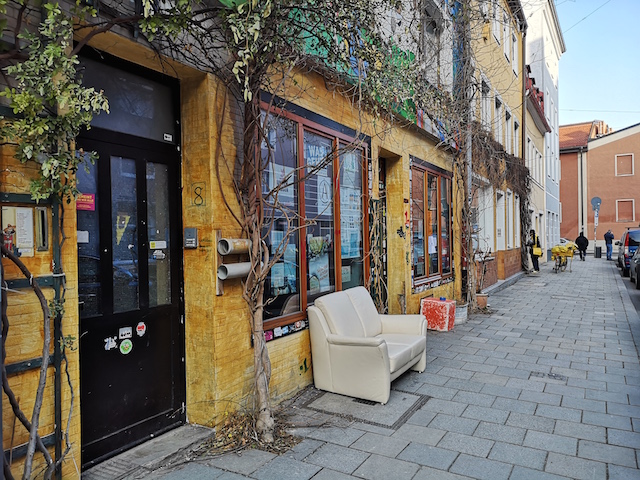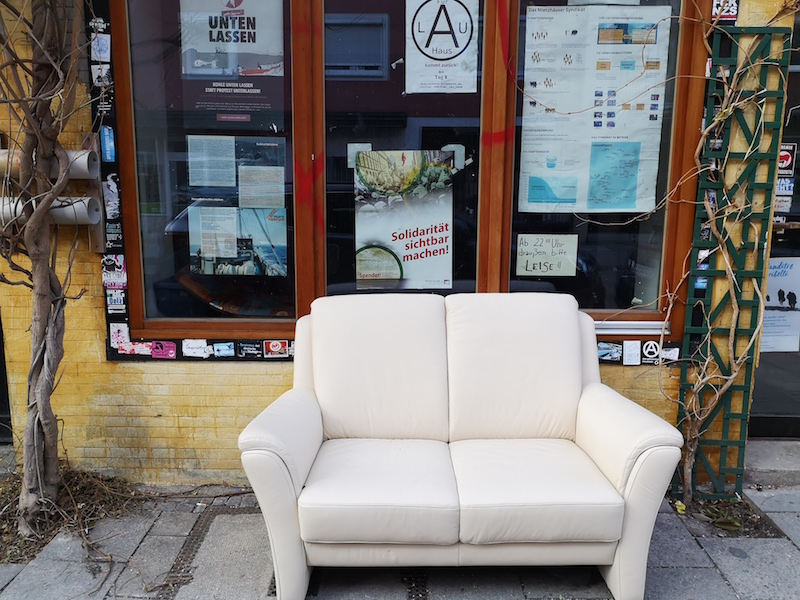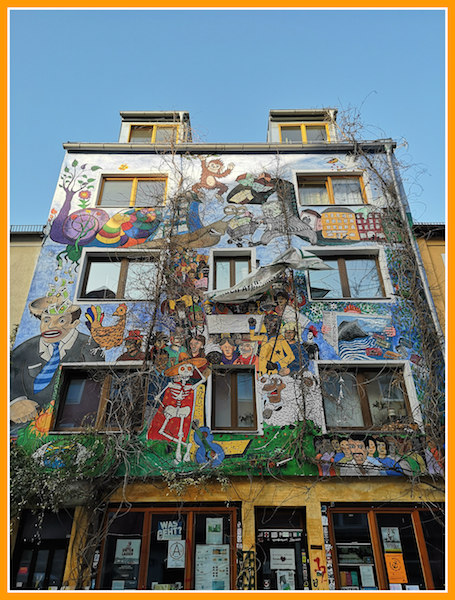Sabine Herrmann is a pioneer in Munich. She founded, together with seven friends, the Ligsalz house 8, the only self-governing residential project in Munich within the framework of a ‘Syndikat house’ model. In total there are twelve housemates living in the house. Their monthly rent is paying off the house, however they don’t own it. Over 400 people can veto the sale of the house to keep it out of the market. Thus solidarity translates into unmarketable properties that keep rents at socially acceptable levels making housing affordable in the city.
On a Saturday evening a mixed audience of millenials and pensioners met at the LBV-Nature Center in the hip neighbourhood of Glockenbach. Affordable housing in the city concerns both. They want to know what Ligsalz house is all about.
Gentrification has indeed become a big issue in Munich. As the city faces substantial population growth, developable land is scarce leading to high property prices and thus limiting the ability of a diverse range of income populations to settle in the city.
Cities have come to the point again where urban dwellers have to explore other forms of affordable housing. It was in the second half of the nineteenth century when precisely two Germans came up with the idea of affordable ‘housing cooperatives’ due to mass urban migration caused by the Industralization and bad housing opportunities in cities. This revolutionary idea at that time improved people’s lives in cities. In fact ‘cooperative housing’ is part of the UNESCO Intangible Cultural Heritage in Germany.
‘Ligsalz house runs under a ‘Syndicat house’ model’, explains Sabine. It is similar to ‘cooperative housing’ but a limited liability company owns the house, instead of the residents’ cooperative. The shareholders of the LLC are the residents association and the ‘Syndicat Network’, which acts as a supervisory agent or committee with more than 400 members.

In every ‘Syndicat house’ residents organize themselves and build a sound business plan to finance the house. The project is financed by banks and partially by crowdfunding, in the form of direct loans from local supporters of the housing projects in question. These are often friends or relatives, or people who would like to actively support the housing idea. A socially acceptable monthly rent is calculated to repay the loan, interests, maintenance and running costs. At the bottom-line the costs are equal to the income from the rents. No profit is made.
As all these costs fall over the years, the surpluses generated by established projects will go to a solidarity pot of the Syndicat Network and be used to kick-start new initiatives.
A further cornerstone of the Syndikat results from the solidarity transfers paid by each housing project. For every square metre of space used, 10 cents are paid into a fund every month. These funds are then used e.g. for infrastructure measures, consulting and start-up costs, and for later renovation work, or are made available as loans to close funding gaps for new projects.
In contrast ‘cooperative housing’ projects have been endangered in some cities because major outstanding building-wide maintenance issues have piled up. For limited-equity cooperatives, it has proved especially difficult to find financing options because of their income restrictions. Some cities like New York came to the rescue offering a range of financing options.
Basically a ‘Syndicat model’ is about using the savings in existing projects to get new projects started that bring about affordable housing.
There are many reasons why people would come together for this kind of housing beyond pure economic reasons and the collective power to afford the house.
Residents who are choosing to forgo traditional apartments and live under one roof usually share common interests, values and beliefs. They can design new forms of living in a house, they can collaborate on ideas and even challenge some of the systemic ways in which the world operates to improve it. Great new ideas in different fields can emerge within these interesting communities.

As San Francisco’s difficult housing situation continues, some residents are choosing to live in commune or intentional community to escape from the cult of individualism. The result is a very creative and diverse group of people living together with a huge potential to challenge the status quo.
For instance, the intentional community called the Embassy Network is ‘a network of place-based communities experimenting with new forms of governance and solidarity’. They have places in cities like San Francisco, Barcelona, Athens, Berlin, etc.
At the Ligsalz house every first Sunday of the month its housemates open the ground floor of their house to anyone for brunch. They have transformed the store, which was on the ground floor, into a large living room with a kitchen. Their original idea was to meet other people in their neighbourhood for a culinary get-together and exchange. ‘This initiative was so successful that it has developed into an open house for everyone to host meetings or a wide range of information events, exhibitions and even a small home cinema’, says Sabine excitedly.
The Ligsalz house project runs since 2008. At the very beginning 10 € per square meter was the monthly rent, which housemates have to assume to make the business plan work. ‘It was pretty high at that time’, explains Sabine.
However, rental prices have been skyrocketing in Munich. The official average rental price recently announced is 19,91 €/m².
‘Now we even have to reduce our monthly rental rate just for the sake of not making profit since our cost burden is decreasing’, says Sabine amusingly. ‘We felt a bit weird about it since we all have good jobs and could afford more. So we decided to voluntary keep paying the same rental rate and putting the savings into the solidarity pot to support other ‘Syndikat’ projects’.
According to market forces, the value of the Ligsalz house would have soared and, as a consequence, rental prices would have been much higher. But Ligsalz house is self-governing and not for sale. Housing market price developments and gains are out of the equation. Keeping housing affordable is indeed possible.




